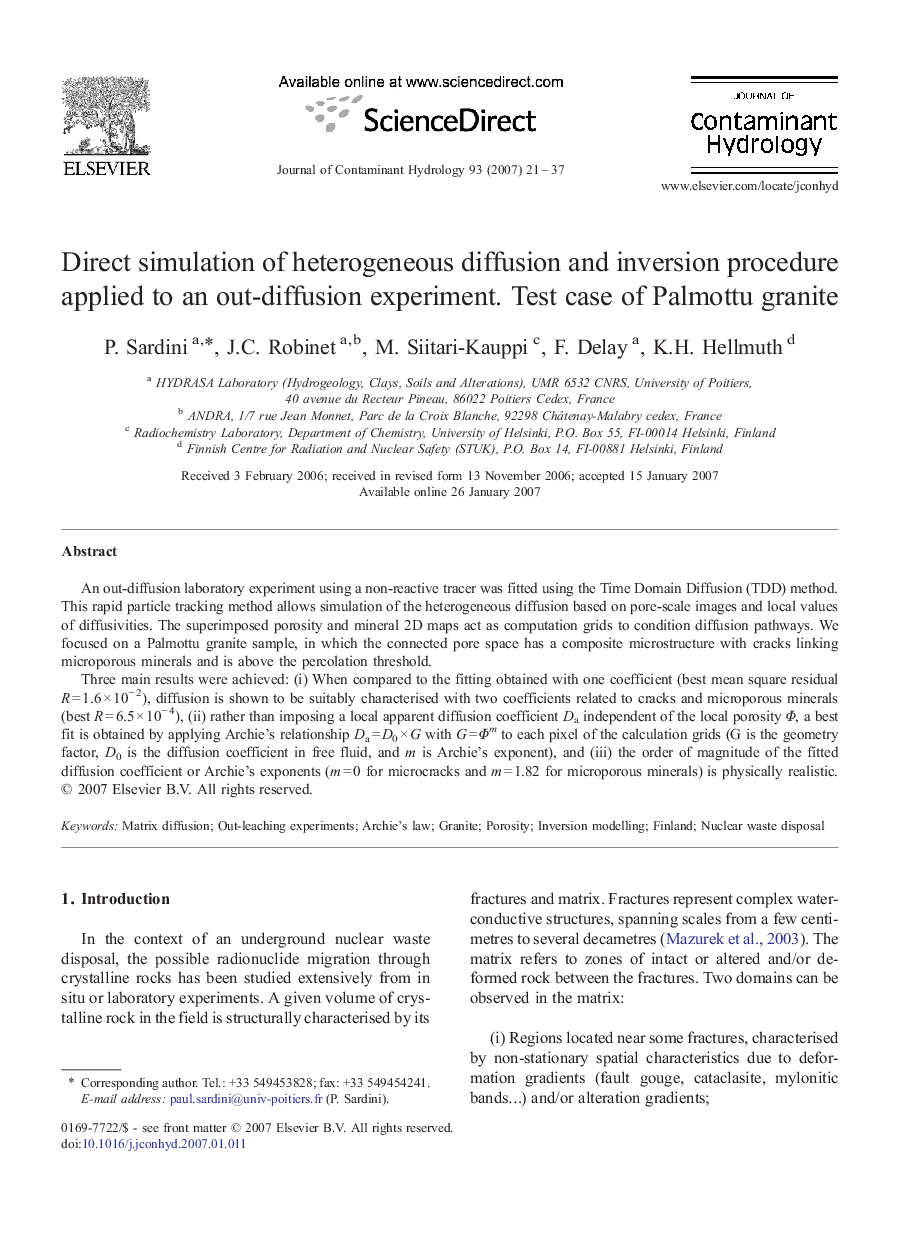| Article ID | Journal | Published Year | Pages | File Type |
|---|---|---|---|---|
| 4547440 | Journal of Contaminant Hydrology | 2007 | 17 Pages |
An out-diffusion laboratory experiment using a non-reactive tracer was fitted using the Time Domain Diffusion (TDD) method. This rapid particle tracking method allows simulation of the heterogeneous diffusion based on pore-scale images and local values of diffusivities. The superimposed porosity and mineral 2D maps act as computation grids to condition diffusion pathways. We focused on a Palmottu granite sample, in which the connected pore space has a composite microstructure with cracks linking microporous minerals and is above the percolation threshold.Three main results were achieved: (i) When compared to the fitting obtained with one coefficient (best mean square residual R = 1.6 × 10− 2), diffusion is shown to be suitably characterised with two coefficients related to cracks and microporous minerals (best R = 6.5 × 10− 4), (ii) rather than imposing a local apparent diffusion coefficient Da independent of the local porosity Φ, a best fit is obtained by applying Archie's relationship Da = D0 × G with G = Φm to each pixel of the calculation grids (G is the geometry factor, D0 is the diffusion coefficient in free fluid, and m is Archie's exponent), and (iii) the order of magnitude of the fitted diffusion coefficient or Archie's exponents (m = 0 for microcracks and m = 1.82 for microporous minerals) is physically realistic.
